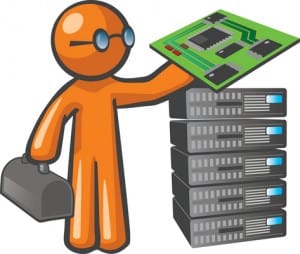Microsoft will stop mainstream support for Server 2008 at the end of this year. This is a popular technology solution, so the end of support creates concern for many. Read on, and we’ll explain what this means and what you should do.
What Does 2008 Server End of Life Mean For Your Company?
Windows Server 2008 end of life means that Microsoft will no longer update this product unless a warranty compels them to do so.
Unfortunately, many businesses are still not ready. The reasons vary, but many company owners stay busy running their day-to-day operations. They just don’t have time for issues like this. And yet, this is a crucial server EOL that could cause many disruptions to your business if not dealt with promptly.
How Soon Should You Get A New Server?
You need to change over from the Windows 2008 Server and Windows 2008R2 to a supported server by the end of the year. That’s the very last moment you’ll have before support is no longer available.
Migrating all of your data, applications, and other IT solutions to new servers is a time-consuming and complicated process, so small businesses should not wait until the last minute.
By waiting, you place your technology assets in danger, and you could pay more for last-minute service. Think of this as an auto repair problem. The sooner you get it fixed, the less it will typically cost. Avoid extra costs and issues by upgrading your servers now.
What Other Problems Can Happen?
An end to bug fixes and those all-important security updates may be the ultimate deal breaker for you. Data managers will tell you that not having these fixes makes your data vulnerable to access by unauthorized parties.
Cybercriminals are on the look-out for ways to infiltrate your systems and steal sensitive data, and they know about the EOL for Windows Server 2008. Since Microsoft will no longer offer security updates and bug fixes for this server, this creates numerous loopholes in data security that could be exploited.
These security breaches can be avoided by installing a newer generation server with supported security updates.
What Should You Do?
There are many reliable servers available on the market today. This new generation of servers offers better efficiency, virtualization, faster speeds, and many other good attributes. Do some research to ensure that you get a proper replacement that will address all the functions that your organization requires.
How Do You Get Ready For The Upgrade?
Installing new servers can be challenging. You have to plan out the process so that everything is done correctly and during off hours, so it doesn’t disrupt your daily operations. The sooner you start, the better.
To plan for an infrastructure upgrade, rewrite and migrate all applications based on Server 2008 to a safe storage place. The new server may require some troubleshooting. Databases can be hosted on the Windows Server 2008 hardware as you install the new system.
During the transition, put a data protection infrastructure in place that will eliminate risks during the server upgrade. This will protect your data from problems with the old server and risks associated with the new system. While this will cost extra, the fines associated with a data breach are often far more expensive.






 backup of your files, documents, folders and data bases. If you require bare metal backups or the ability to convert your server into a virtual machine to keep afloat until replacement hardware is in place and running, Tech Experts also offers devices that can fulfill that requirement as well.
backup of your files, documents, folders and data bases. If you require bare metal backups or the ability to convert your server into a virtual machine to keep afloat until replacement hardware is in place and running, Tech Experts also offers devices that can fulfill that requirement as well.
